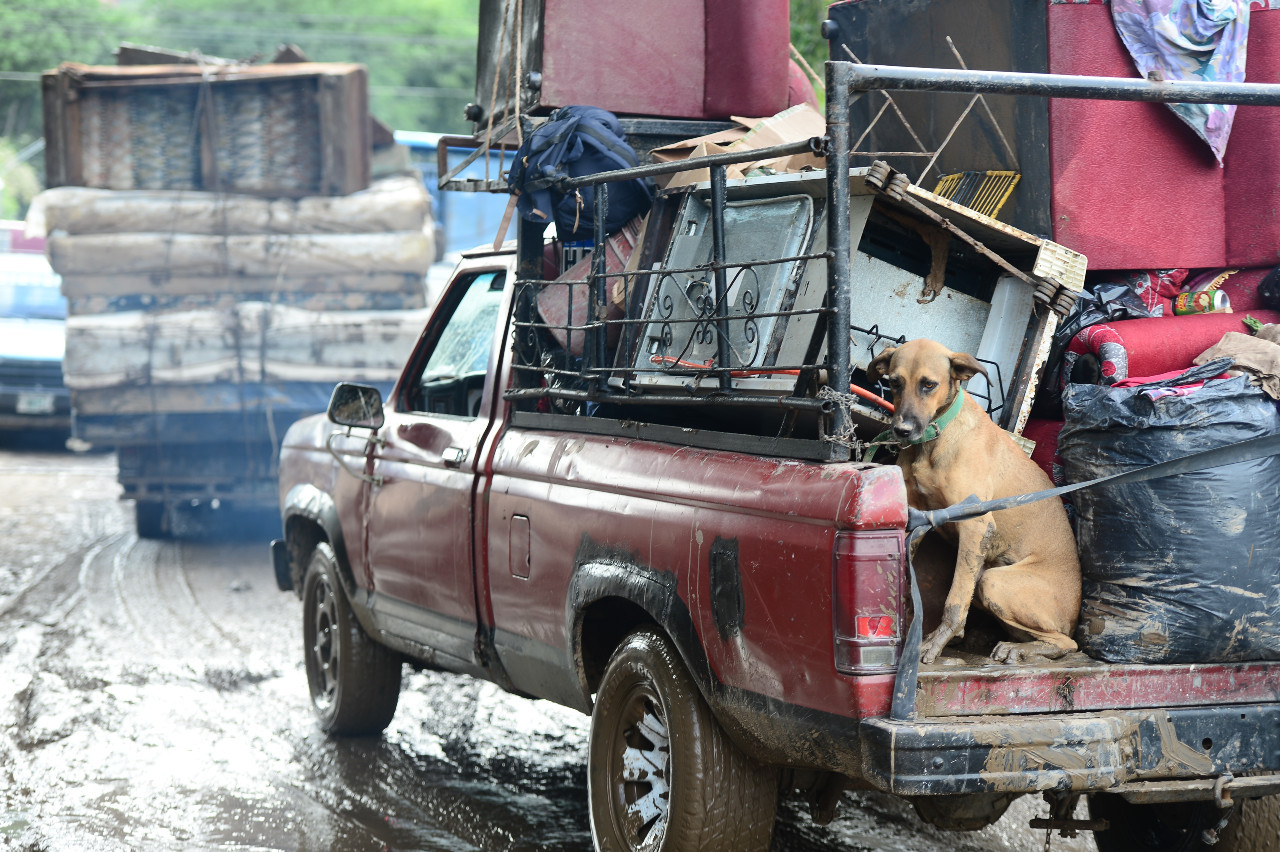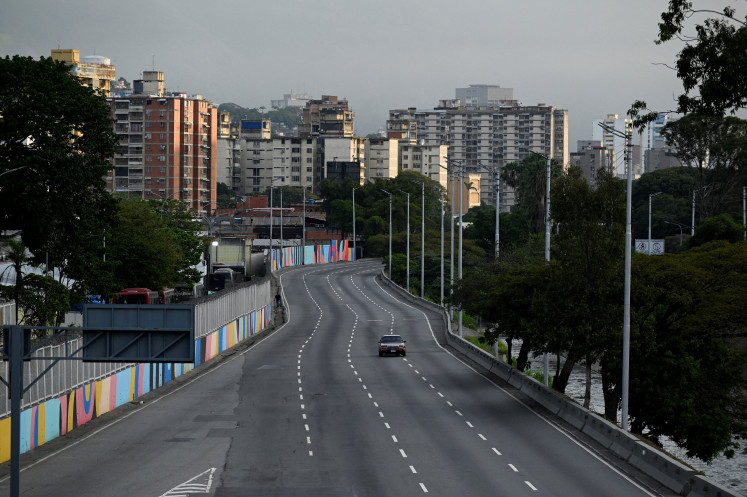Popular Reads
Top Results
Can't find what you're looking for?
View all search resultsPopular Reads
Top Results
Can't find what you're looking for?
View all search resultsRescuers struggle to reach storm-hit Guatemalan village; dozens missing
Storm Eta's torrential downpours toppled trees, engorged swift-moving rivers, and ripped down parts of a mountainside above the village of Queja in the central Guatemalan region of Alta Verapaz, burying dozens of people in their homes.
Change text size
Gift Premium Articles
to Anyone
R
escue workers on Saturday struggled over treacherous roads buried in mud and rubble to reach a remote mountain village in Guatemala swamped by a devastating storm that has killed dozens of people across Central America and southern Mexico.
Storm Eta's torrential downpours toppled trees, engorged swift-moving rivers, and ripped down parts of a mountainside above the village of Queja in the central Guatemalan region of Alta Verapaz, burying dozens of people in their homes.
The heavy rains are still triggering mudslides in Queja. Francisco Muz, a retired general who was helping in the rescue efforts, said he spoke to Gloria Cac, a woman who was missing 22 family members.
"At ground zero there is a terrible reality. The landslides have not stopped because of the rains in the mountains ... this national tragedy is centered in San Cristobal Verapaz, in Queja village," Muz told Reuters.
The devastating weather front has spread destruction from Panama to Costa Rica, Nicaragua, Honduras and Mexico, which between them have registered well over 50 deaths.
A steady drizzle fell as firefighters in San Cristobal Verapaz prepared to make the journey on foot to Queja, which they said could take a full day.
"An attempt was already made to get through but it's very difficult and we're really sad we couldn't get through, but it's very dangerous," said Juan Alberto Leal, an official with the local fire service. "The problem is that there are several mudslides throughout the route."
Ordinarily, the 22-km (13.7 mile) trip between San Cristobal Verapaz and Queja takes an hour by car.
Some 55 soldiers, 25 firefighters and 15 police officers have managed to reach the site of the disaster and were using shovels and picks to search for survivors and retrieve bodies.
So far three bodies have been recovered.
"The mud is very thick, it's hard to know really just how thick, and we're (digging) from the surface until we find the first homes and there could be bodies there," Army spokesman Colonel Ruben Tellez said.
"It could take months to unearth" all the homes, he added.
President Alejandro Giammattei on Friday hinted up to 150 people could have been buried in the Queja landslide.
Guatemalan disaster relief agency Conred said 109 people were still missing and 15 confirmed dead in the country.
It was not the first time disaster struck this corner of Alta Verapaz. The area around Queja appeared to be the site of a huge landslide on a road pass a decade ago, which killed dozens, Tellez said.
Taiwan donated $200,000 and the United States $120,000 for the purchase of food and drinking water, Giammattei said.
"The number of people in the shelters has continued to grow and we haven't finished rescuing people," the president added.
One of the fiercest storms to hit Central America in years, Eta struck Nicaragua as a Category 4 hurricane on Tuesday with winds of 150 miles per hour (241 kph).
Dumping relentless rains, it weakened to a tropical depression as it moved inland into Honduras and Guatemala before re-entering the Caribbean sea and advancing towards Cuba.
The Cuban meteorological office warned on Saturday of torrential rain and flooding as Eta churned northwards towards the island, and on track for Florida.










